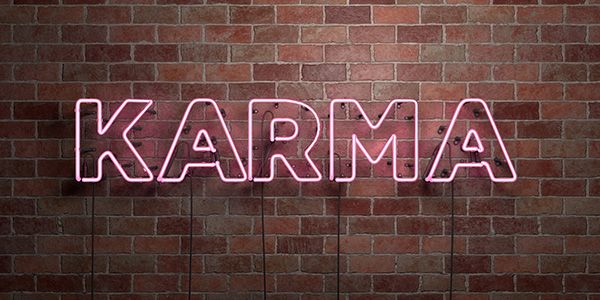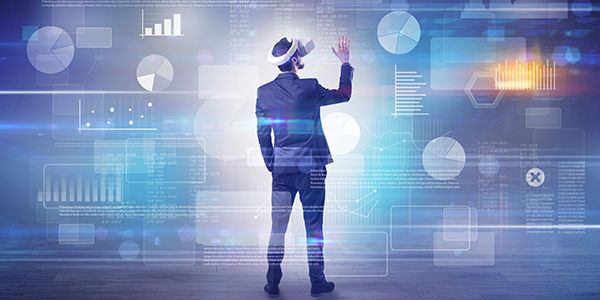You see things and you say, ‘Why?’. But I dream things and I say, ‘Why not?’ – George Bernard Shaw
Innovation is often risky, time consuming and frequently more expensive than existing, conventional solutions. Many of the answers required to make effective long term decisions aren’t known. Indeed, many of the relevant questions haven’t yet been asked. However, failure to innovate, to adapt, to evolve can lead to a slow and painful end. That’s why one organization took on the challenge and followed the innovation road.
Faced with this dilemma in 2014, The Canadian Urban Transit Association (CUTA), sought to launch a standalone, independent organization to spearhead research and development of leading edge low carbon smart mobility technologies focused on advanced transit, transportation, and integrated mobility applications.
The result was CUTRIC, the Canadian Urban Transit Research and Innovation Consortium. CUTRIC is an independent, not-for-profit organization with a mission “To support research, development, demonstration and integration through industry-academic project-based collaborations that bring innovation, design, and manufacturing to Canada’s transportation supply chain.”
The Situation
CUTRIC selected Josipa Petrunic as its first President and CEO. Since joining CUTRIC in 2015, Josipa and her team have grown CUTRIC’s footprint to a 120 member organization representing transit agencies and academic institutions across Canada and including the Who’s Who of Canada’s, and many of the world’s, leading industrial organizations. The total value of approved CUTRIC funded projects exceeds $40 million to date, including twelve R&D projects, three commercialization projects and five consultation, research and other initiatives.
CUTRIC’s objective is to “Make Canada a global leader in low-carbon smart mobility innovation” by supporting “industry-academic collaborations in the development of next generation technologies for Canadian transportation systems. These advancements will help drive forward innovation in transportation across Canada, leading to job growth, economic development and significant Greenhouse Gas (GHG) reductions.” The project and development focus is on its four pillars of innovation:
- Zero- And Low-Emissions Propulsion Technologies and Systems Integration
- “Smart” Vehicles and “Smart” Infrastructure
- Big Data for Mobility Analytics and Mobility as a Service Application
- Cybersecurity in Advanced Mobility Applications
CUTRIC‘s approach to launching projects, garnering partners and securing funding has contributed considerably to its success to date. Most partners pay an annual membership fee which, together with assorted government and industry grants and loans, provides the operating capital. The project ideas come from CUTRIC, from the industry and academic partners and from government and industry groups.
CUTRIC vets the project opportunities and prepares the project charter for submission to its members. Participation is voluntary and can range from two to three industry and academic partners to over fifty participants. A CUTRIC staff member is always in the sponsor’s chair. Project participants get input to the goals and conduct of the project, contribute to its conduct and share in the resulting deliverables and any intellectual property.
It became evident early on that a one-size-fits-all approach would not attract the diverse membership necessary to achieve CUTRIC’s mission. The needs and capabilities of its current and future partners varied considerably, from large regional transit organizations to small rural operations, from a vast array of industrial partners to colleges and universities across the country and beyond.
One of the key deliverables for serving that diverse community was a modelling tool that participants could use to plan, implement, manage and migrate low-carbon technologies in a cost-effective manner, reaping the rewards and managing risks along the way. The initial first generation prototype release was a tool called TRiPSIM™ , which was soon replaced by a second generation tool, called RoutΣ.i™, designed from scratch based on months of inputs gleaned from transit agencies that requested more powerful modelling and simulation capabilities.
The Goal
To develop a predictive model that enabled transit agencies and other fleet owners to make informed decisions about electric vehicle deployments by predicting operational costs and benefits, total CO2e savings, and charging and hydrogen fuelling requirements using proprietary information from the equipment manufacturers.
The Project
CUTRIC staff developed a proposal for the simulation tool and distributed it to its partners. Nine industry partners and three academic institutions expressed interest and committed to its further development.
Development of the TRiPSIM™ tool started in March 2017 with the University of Victoria. The main inputs included the characteristics of the bus, route topography, ridership, powertrain efficiencies, route scheduling, and driving speeds. The model would calculate e-bus energy consumption as well as battery state-of-charge, time required to charge, and total electricity consumed.
In July 2019, a team of six researchers, mostly with doctorates and master’s degrees in technical fields around energy consumption, modelling and GIS, located in Ontario and Quebec, developed RoutΣ.i™ using the mathematical language of Python. Individual projects were launched to incorporate each transit agency’s unique characteristics to the model. The overall project was governed by a CUTRIC guided steering committee including representatives from each of the committed industry and academic partners.
The tool included manufacturer-vetted and utility-vetted predictive modelling outputs to demonstrate how various e-buses and e-chargers would operate based on variable route topologies, passenger profiles, stop-start needs, and other route requirements. The tool also had to support extensions to model hydrogen fuel cell vehicles and other evolving innovations. Plans also called for the commercialization of the TRiPSIM© app to generate new revenues for the consortium of partners.
Advertisement
[widget id=”custom_html-68″]
Subsequent releases of the TRiPSIM© tool enabled comparative analyses of varied e-bus and fuel cell ebuses and their allied charging and/or fueling systems, integrating:
- energy consumption estimations,
- environmental costs and benefits;
- electricity and fuel costs and benefits and;
- resiliency costs and benefits for public fleet systems specifically.
RoutΣ.i™ is updated on monthly basis to meet ongoing changes in the costs and capabilities of low carbon technologies.
In addition, a complimentary tool, CloudTransit™, a cloud-based software analytics tool, has been developed to collect and assess data in real-time from overhead charging systems and electric buses accommodating emerging international standards and compatible with various OEM bus platforms. The shared platform merges real-time data from competitive OEM data loggers to perform meta-level analysis for transit agencies.
The CloudTransit™ team includes a half dozen researchers, most with advanced degrees, who overlap to some degree with the RoutΣ.i™ team.
The Results
The first outputs from the TRiPSIM© modelling tool took nine months to deliver and were released in December 2017. Subsequent releases and modelling outputs based on the new capabilities of RoutΣ.i™ have resulted in more than twenty projects being completed for transit agencies across Canada and in California to date. Each project takes about three to six months depending on the complexity of the transit agency.
Because the application was built with direct powertrain inputs from manufacturing partners, it has become a highly unique and industry-leading tool. Plans call for a significant expansion of the application to cover all transit systems across Canada in support of the Federal Government’s carbon emission reduction targets.
The major challenge on CloudTransit™ is trying to build a tool to help transit agencies understand their fleets better only to discover that, in many cases, transit agencies did not collect data in a standard way, it was often not digitized and even when it was, it was not digitized in a standard format so municipalities could share and compare. In many cases, the agencies did not have robust data sets or precise GPS tracking for every one of their vehicles, or precise topographical maps.
As these challenges are overcome, agencies will be able to see meaningful real time results such as kilowatt hours per kilometer and energy consumption per passenger. Cities get much more insight into how their assets are performing. That allows them to work with manufacturers to ensure the results are consistent with product expectations and to work to close any performance gaps.
The CloudTransit™ tool is now being implemented for three large transit organizations, one in BC, two in Ontario, with twelve more agencies expressing support for the initiative. CloudTransit™, once it’s set up as a data trust, is intended to last forever as a municipal asset to support the evolution of smart cities. Like RoutΣ.i™, plans call for CloudTransit™ to grow, with a proposed cohort of over one hundred data scientists and researchers across Canada to be added to the initiative to cover all Canadian transit agencies with electric and hydrogen electric buses.
How a Great Leader Delivered
CUTRIC has mastered mass collaboration to achieve its goals, bringing together all levels of government, transit agencies big and small and private industry in Canada and beyond. Imagine if governments and industry worldwide could learn to apply mass collaboration with the same expertise and zeal as CUTRIC. Perhaps the pursuit of worldwide challenges, like COVID-19 treatments and vaccines, could be accelerated exponentially.
CUTRIC’s intriguing operating model and style has enabled it to achieve remarkable results in the few short years of its existence. Here are some of the other factors that have contributed to that success:
- Leadership with vision, knowledge, passion and engagement – In my experience, organizations with informed, passionate and engaging leaders are invariably more successful. It’s clear why CUTRIC is where it is today. Josipa Petrunic, CUTRIC’s President and CEO, has lived and breathed this low carbon world for years, through her post graduate studies, her work as lead researcher in electric vehicle policy studies at McMaster University and her involvement with the Women’s Transportation Seminar (WTS) Foundation among other pursuits.
- Top talent - Josipa is supported in her goals by a highly credentialed and experienced team of senior specialists, researchers and managers who bring their expertise and insights to every CUTRIC initiated collaboration.
- An opportunity to innovate – CUTRIC exists to foster low carbon innovation in Canada’s transportation sector. Without that presence, many of the transit, industrial and academic organizations across the country would not have the vision, financial capability or technical talent to go it alone. For those organizations, the ability to participate in and benefit from ground breaking research and innovation is made possible and practical with CUTRIC’s partnership model, sharing the benefits and the risks.
- The ability to choose – Every transit organization, every company, every academic institution is unique. Each serves different communities, different user needs, different geographical regions, different infrastructures and different political priorities. CUTRIC’s operational model provides an appealing opportunity for its partners to be exposed to the full gamut of initiatives being considered and under development. Yet each organization also has the ability to choose which specific undertakings they wish to commit to and be actively involved in. That is a compelling argument for membership.
- A tolerance for ambiguity – CUTRIC’s ultimate success depends on a massive cultural shift. Transit agencies across Canada need support in learning how to standardize their data, learning how to collect that data in real time, how to move it to a cloud platform, how to cyber secure it, and then learning how to share it in real time. It’s a massive cultural shift to show that data openly so other cities can learn and act on those experiences. It’s also a significant change for industry members, where product performance can be tracked in detail. CUTRIC’s staff enables that transition, one project at a time, each step of the way.
- Robust governance – Each initiative has a steering committee made up of the partners involved. The committees are essential for dealing with the challenges of deploying technology when there are multiple competitors at the table. Each has its own charter and voting mechanisms and meets regularly, with subcommittees as needed for things like public affairs and technical matters. The steering groups have been highly effective because participation is high and dedication is high.
- Lean and mean – CUTRIC has a small, highly knowledgeable and talented staff. It relies on its industry, government and academic partners for financial support and incremental on-the-ground expertise and talent. That gives CUTRIC the ability to move swiftly, at little cost and risk, to take advantage of new opportunities and quickly terminate initiatives that are not yielding expected returns.
- Focus – CUTRIC’s vision is to make Canada a global leader in zero- and low-emissions transportation technologies. While it welcomes participation from all, including international industrial and academic organizations, that focus on specific markets and technologies is a force multiplier.
- Phased development and staged delivery – You won’t see any multi-million dollar, all partner implementations in CUTRIC’s portfolio of projects. Each initiative is carefully phased to manage risks and rewards. Each rollout is staged, in trials, by partner, by platform to gain insight, to improve the product, to make the next implementation even better.
- Amplified communications – With a wide array of possible partners on each project, the inherent risks of innovation and the geographical challenges of a country like Canada, one would expect innumerable communication challenges and the resulting project pitfalls. Apparently not so. Precisely because a potentially large number and wide variety of stakeholders can be involved on each project, communications is job one. Shared interests, knowledgeable and talented participants, highly focused scope, phasing and staging and effective governance all help to improve and amplify communication effectiveness.
An example of that heightened communication focus can be found in the planned 2nd Canadian Low-Carbon Smart Mobility Technology Conference scheduled for June 17 – 19, 2020. Hosted by CUTRIC and originally planned as a physical, attend in person event, it’s now virtual!
So, if you’re involved in an innovation venture or a challenging change with a diverse set of participants, consider CUTRIC’s approach and the ten factors above that have helped it succeed year after year. Also remember, use Project Pre-Check’s three building blocks covering the key stakeholder group, the decision management process and the Decision Framework right up front so you don’t overlook these key success factors.
Finally, thanks to everyone who has willingly shared their experiences for presentation in this blog. Everyone benefits. First time contributors get a copy of one of my books. Readers get insights they can apply to their own unique circumstances. So, if you have a project experience, a favorite best practice, or an interesting insight that can make a PM or change manager’s life easier, send me the details and we’ll chat. I’ll write it up and, when you’re happy with the results, Project Times will post it so others can learn from your insights.





